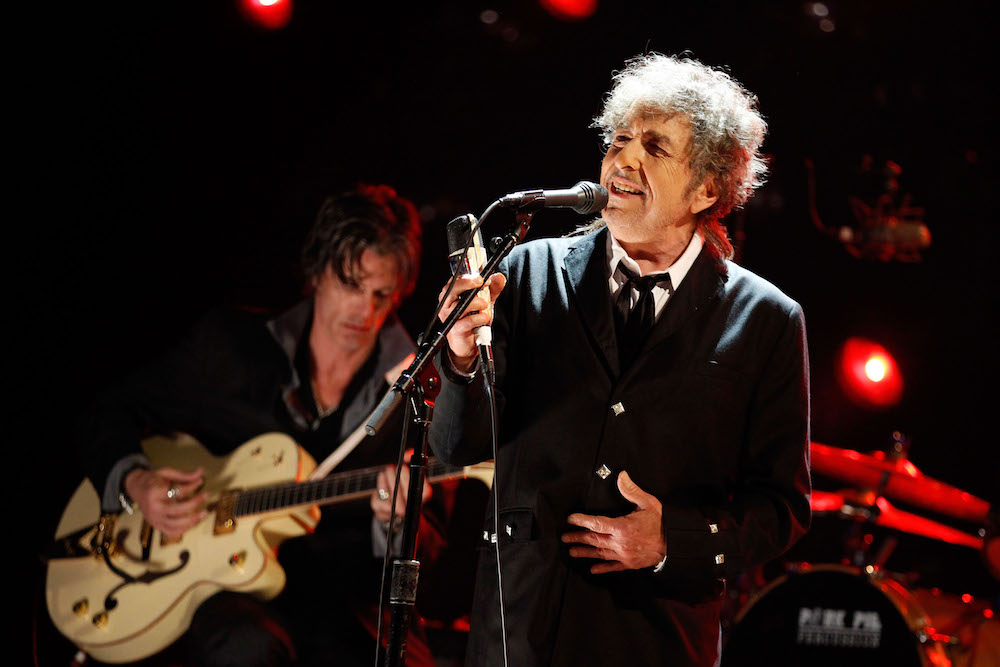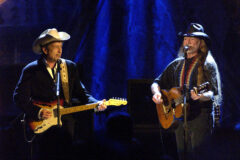Mondo Scripto, an exhibition currently running at London’s Halcyon Gallery, features a new series of drawings by Bob Dylan. The show is being billed as “the first time [he has] fused together his artistic disciplines”—that is, music (or, more accurately, lyrics) and visual art.
For each piece in Mondo Scripto, Dylan visually interpreted the words to one of his famous songs. These texts have beguiled critics and audiences for decades, so rich are their layers of meaning. They earned Dylan the first-ever Nobel Prize in literature awarded to a musician, for “having created new poetic expressions within the great American song tradition.” Even in old age, Dylan’s mind is singularly playful and sharp. He remains as resistant as ever to giving easy answers or pandering to the expectations of his listeners. Perhaps this new approach to his old canon will open untold depths in the work, sending everyone back to the source material for another generation of study. Indeed, the Mondo Scripto press materials praise the “many different and surprising angles” from which the old master sees the old warhorses in his songbook.
Let’s take a look at one of those drawings. Say, “Lay Lady Lay,” from 1969’s Nashville Skyline. If you’re like me, you might prefer one of the later live versions, say from Hard Rain in ’76, itself proof of the worlds of ambiguity within this music, turning the whispered sweet nothings of the original into fevered howls from the mountaintop, reminding us that romantic love is a spectrum of emotions, from contentedness to wild passion, tenderness to violence. Will Dylan’s “Lay Lady Lay” drawing unlock similar insights?
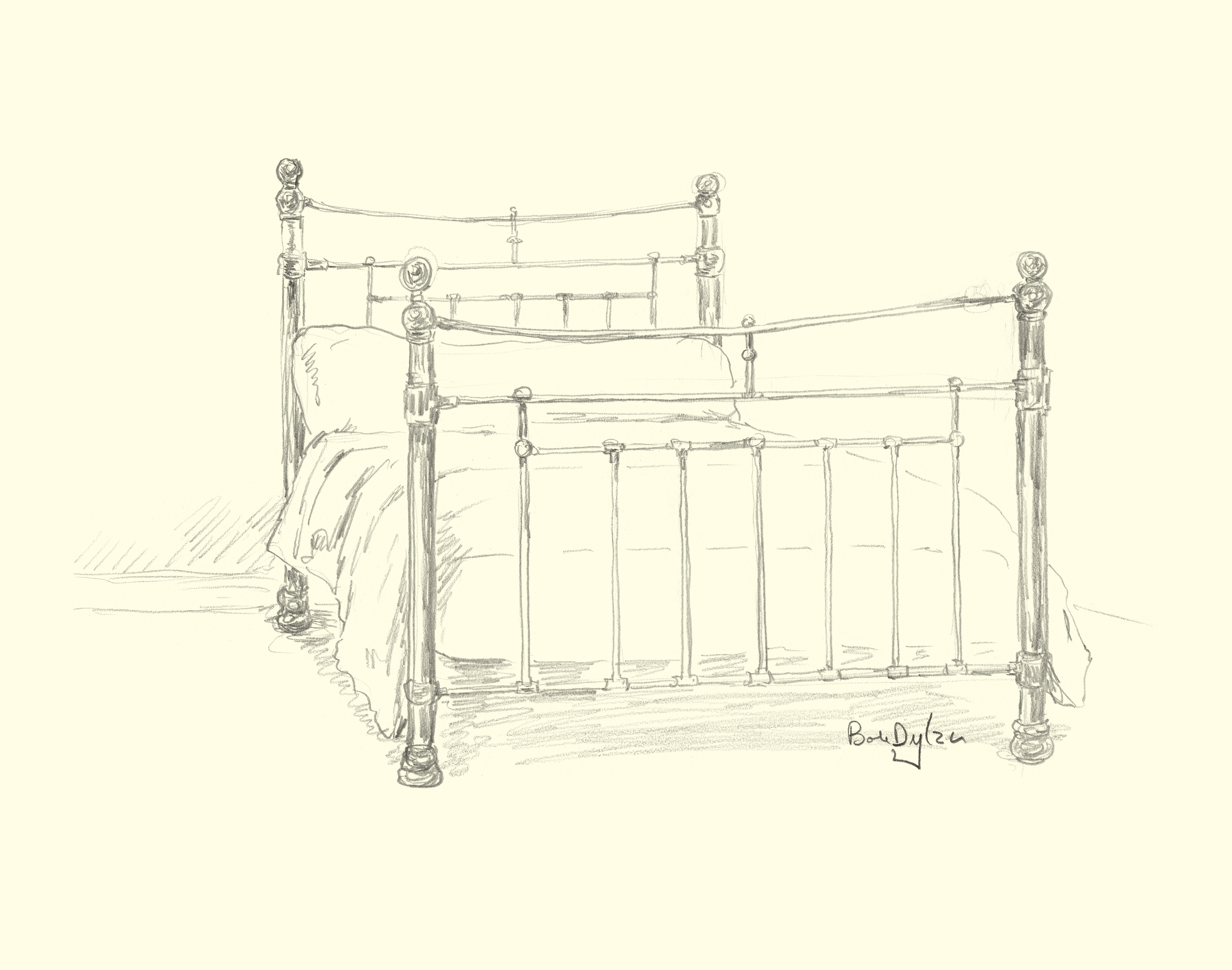
Hmm. Here we have a bed, for a lady to lay in. Presumably the “big brass bed” Dylan keeps singing about in the song. I’m not sure what else to take away from it, to be honest with you. Maybe it’s a little smaller and simpler than the bed I imagined it to be? A statement about austerity, the spiritual fortitude that rises from living with only the barest essentials? Or maybe it’s just a bed.
Let’s try another one. How about “When I Paint My Masterpiece,” first released by The Band in 1971 but composed by Dylan sometime before that. You can see how Dylan might draw out the song’s sense of unresolved tension, the yearning to throw off the burdens of history and enjoy some peace and quiet that may never actually arrive. What do we have here?
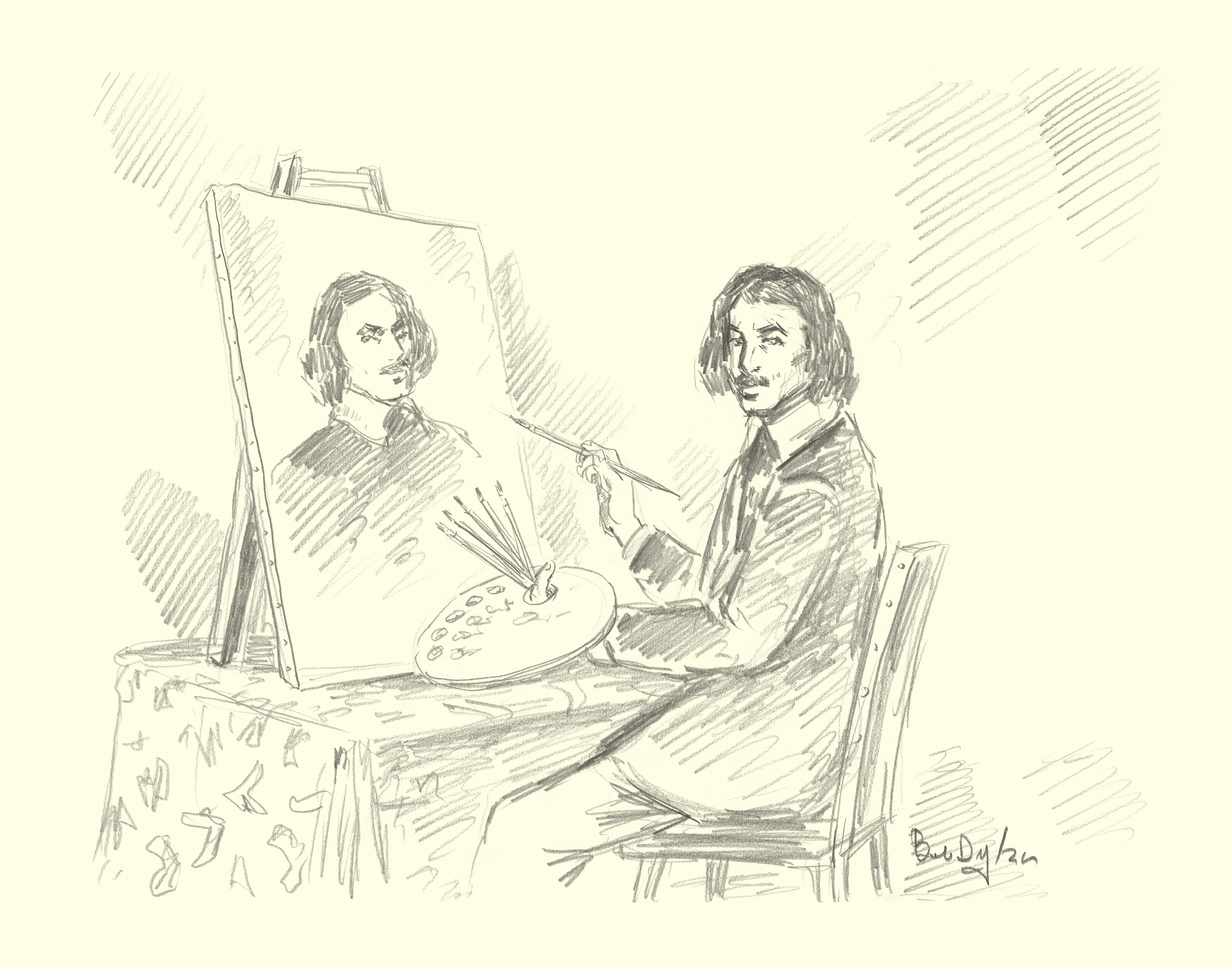
A painter painting his masterpiece. OK. I get it, I think?
Let’s go a little further back into the catalog, to the fierce workingman’s protest of “Maggie’s Farm.” What are we looking at, Bob?
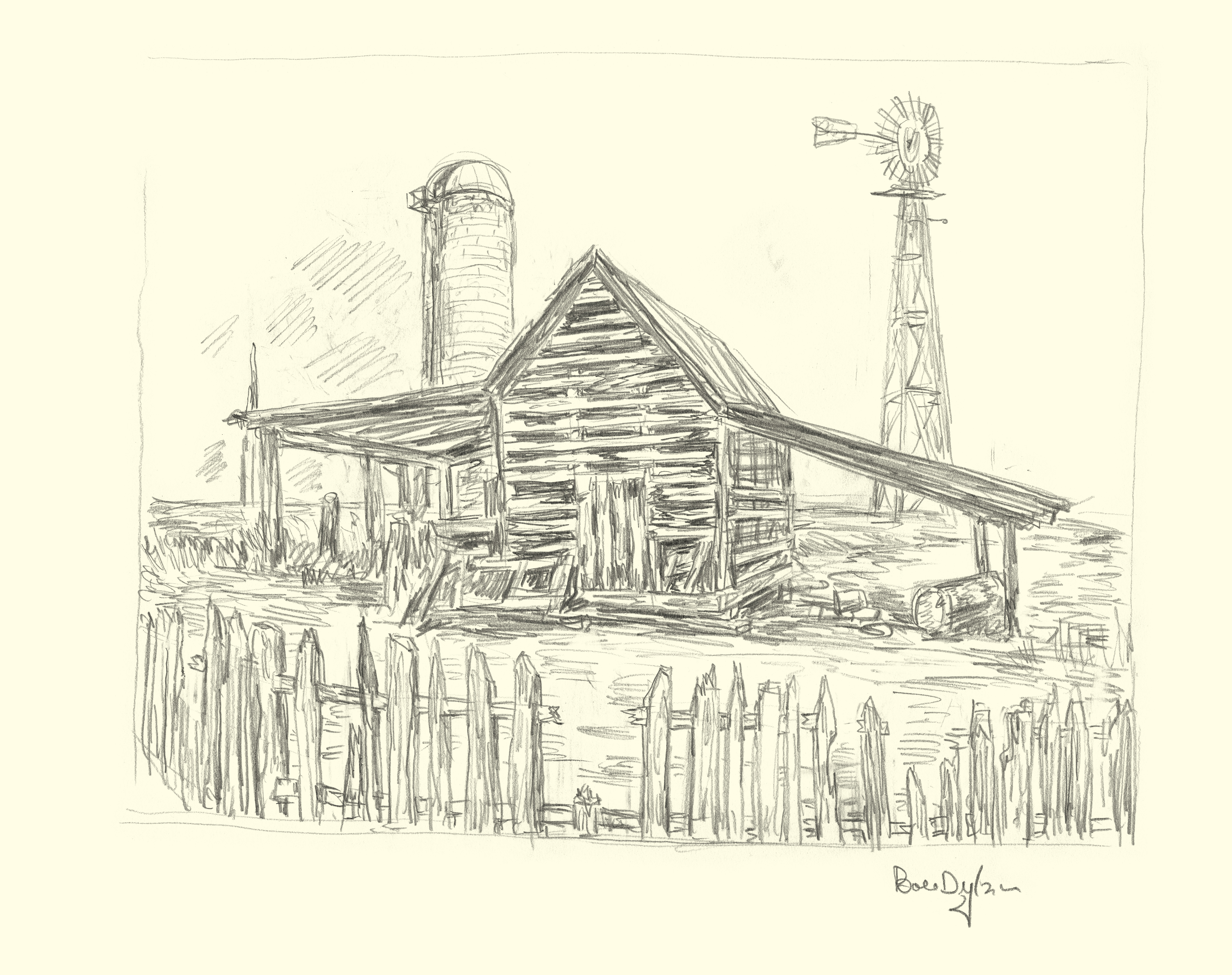
A picture of a farm.
“Masters of War”?
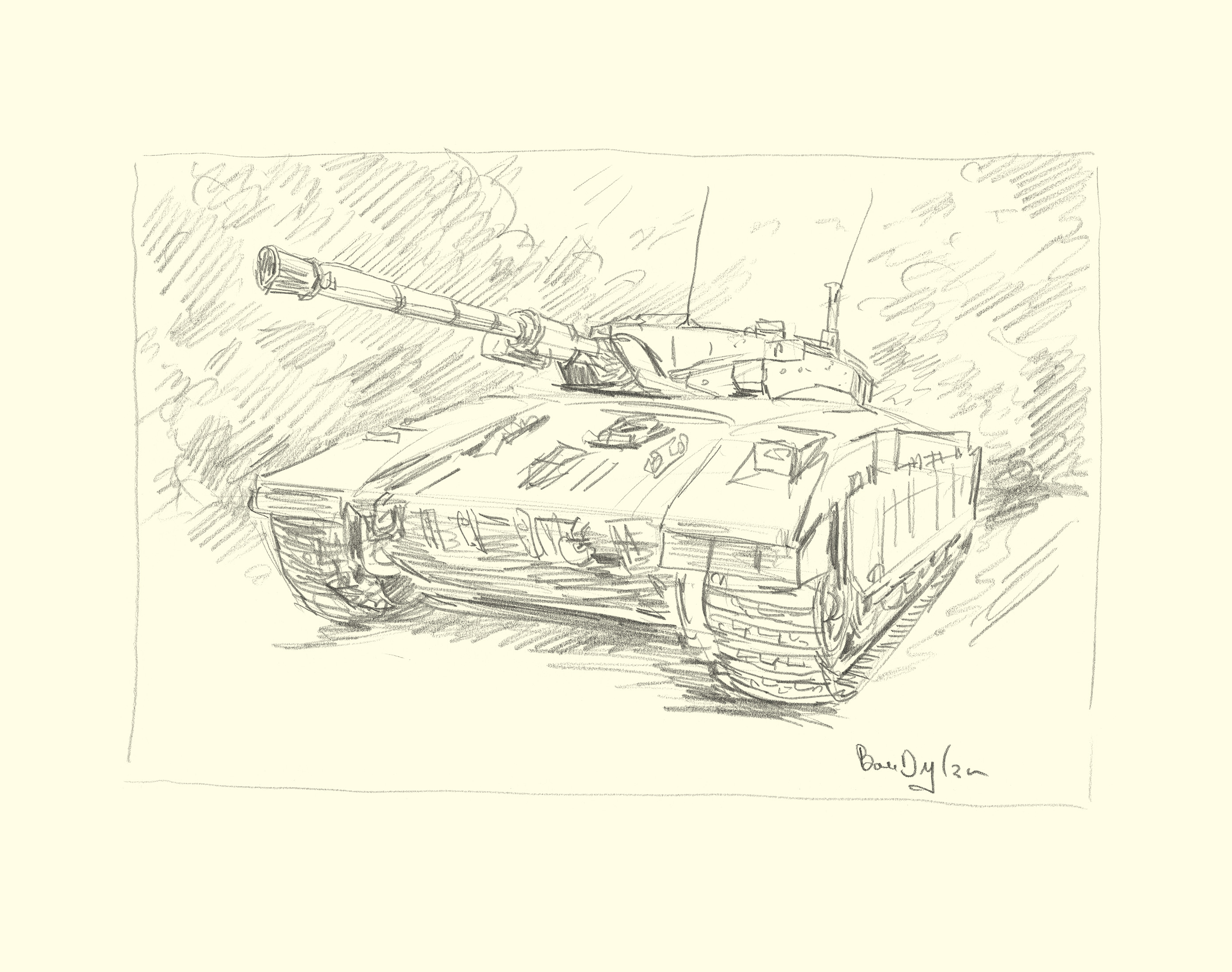
A picture of a war.
What about “Knockin’ on Heaven’s Door,” whose spare elegance and defeated wisdom have inspired countless other legendary performers, from Warren Zevon to Eric Clapton to Axl Rose?
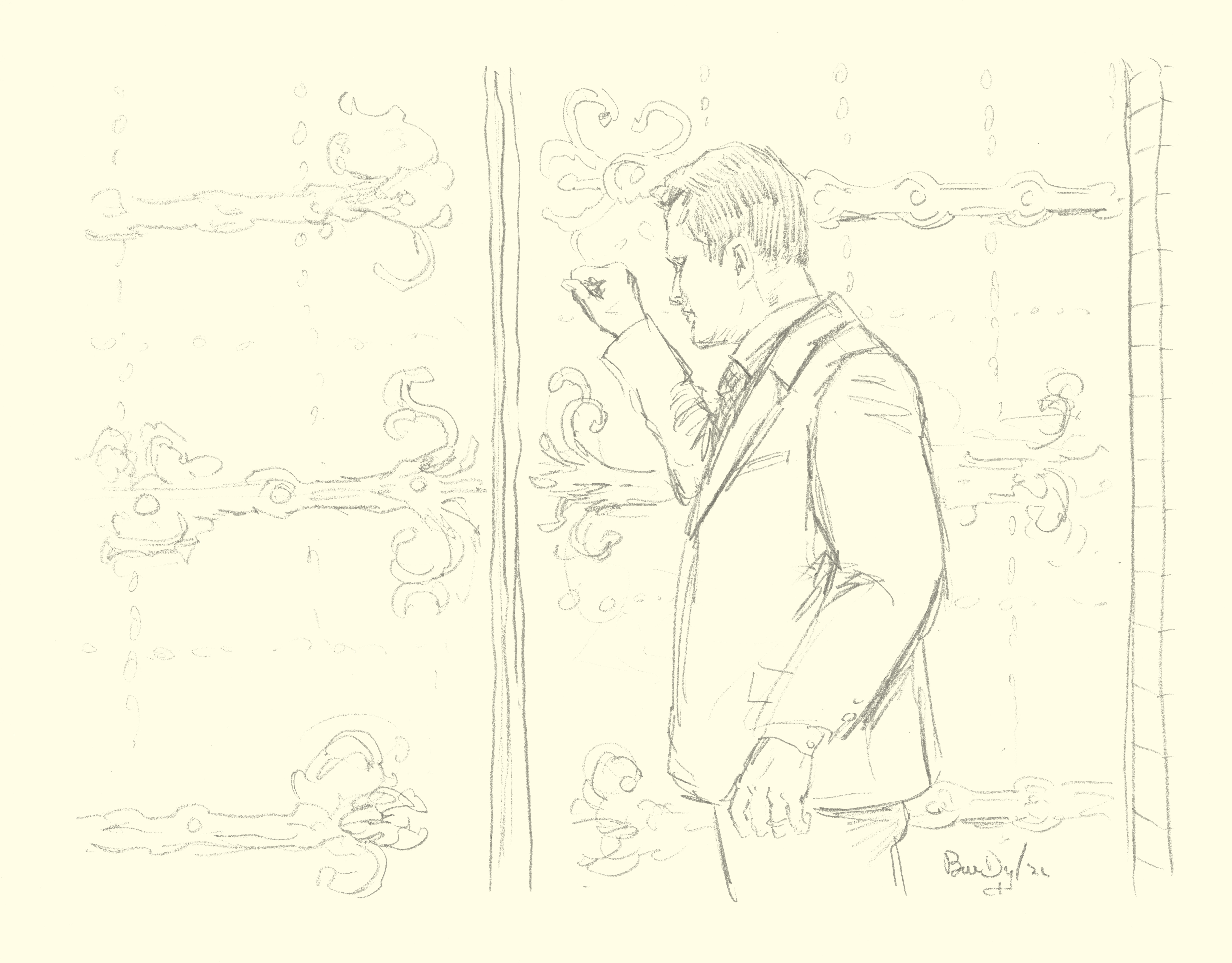
A picture of a guy knockin’ on heaven’s door. Nice.
To be fair, not every piece in the show is so weirdly flat and literal: there are also desolate highways, broken-down cars, a ladder shooting up into the cosmos. Still, it almost feels like Dylan was going out of his way to offer the simplest, least challenging take on his own music. He has always been resistant to his treatment as a prophet, and the treatment of his work as a kind of Talmud to be examined. (Remember, this is a guy who celebrated his own Nobel literature win by literally reading from SparkNotes.) In that context, the no-duh aspect of these drawings starts to take on its own meaning: a rebellion against interpretation, in the guise of interpretation itself; a message to stop looking for things that aren’t there, and take the songs for what they are, on their own terms. Maybe Bob Dylan is still playing tricks on us. Or maybe I’m reading too much into it.
[h/t Tyler Wilcox]

